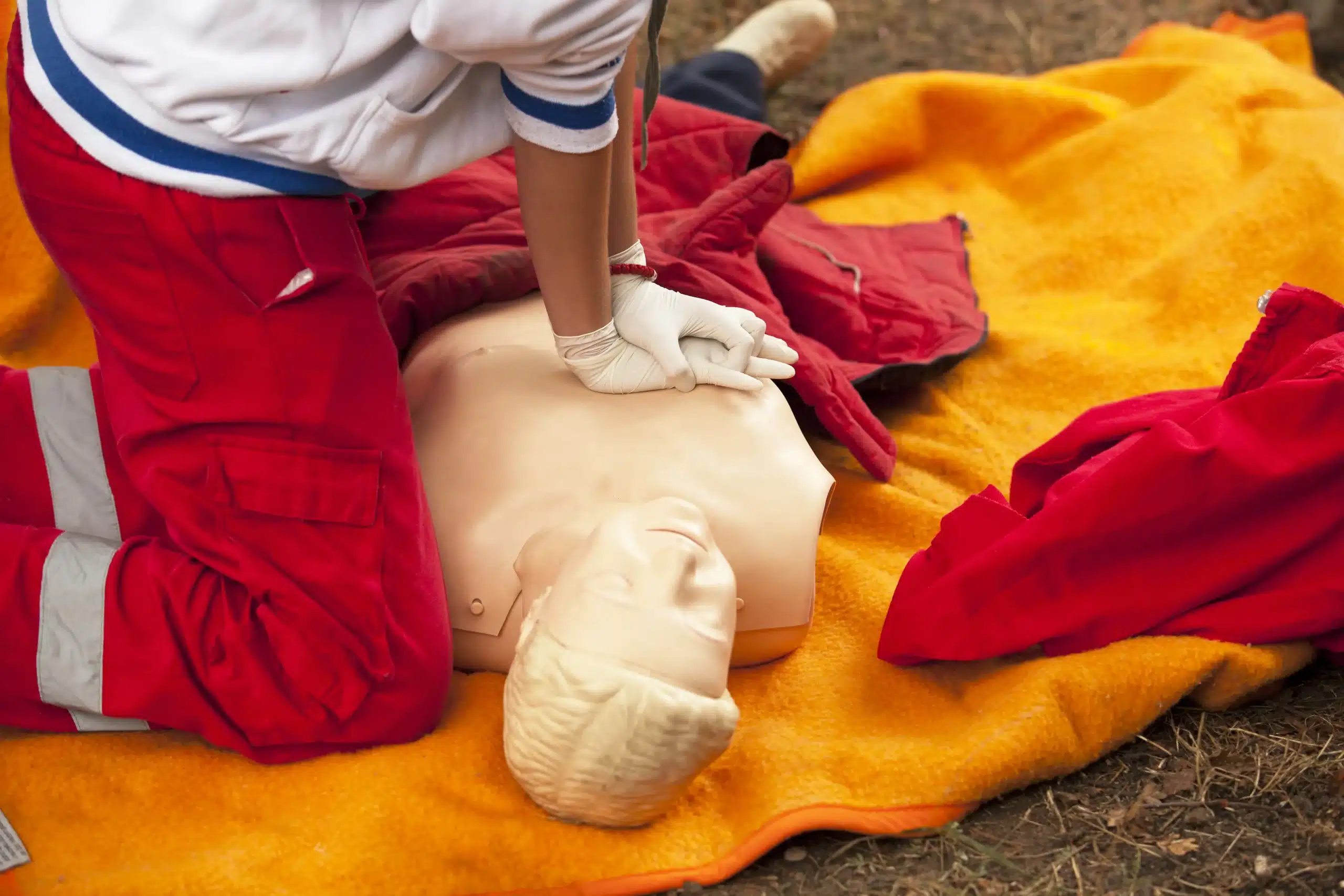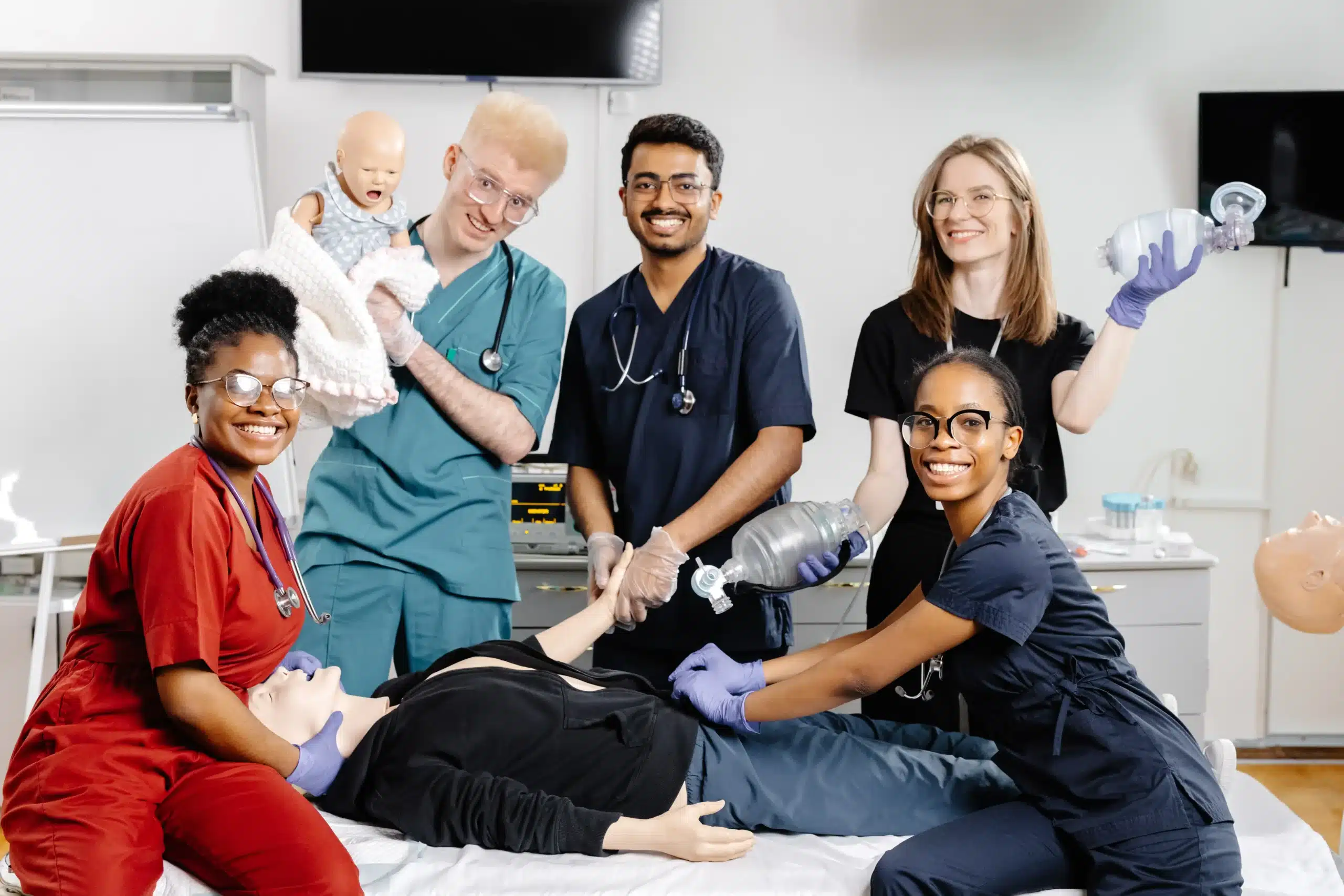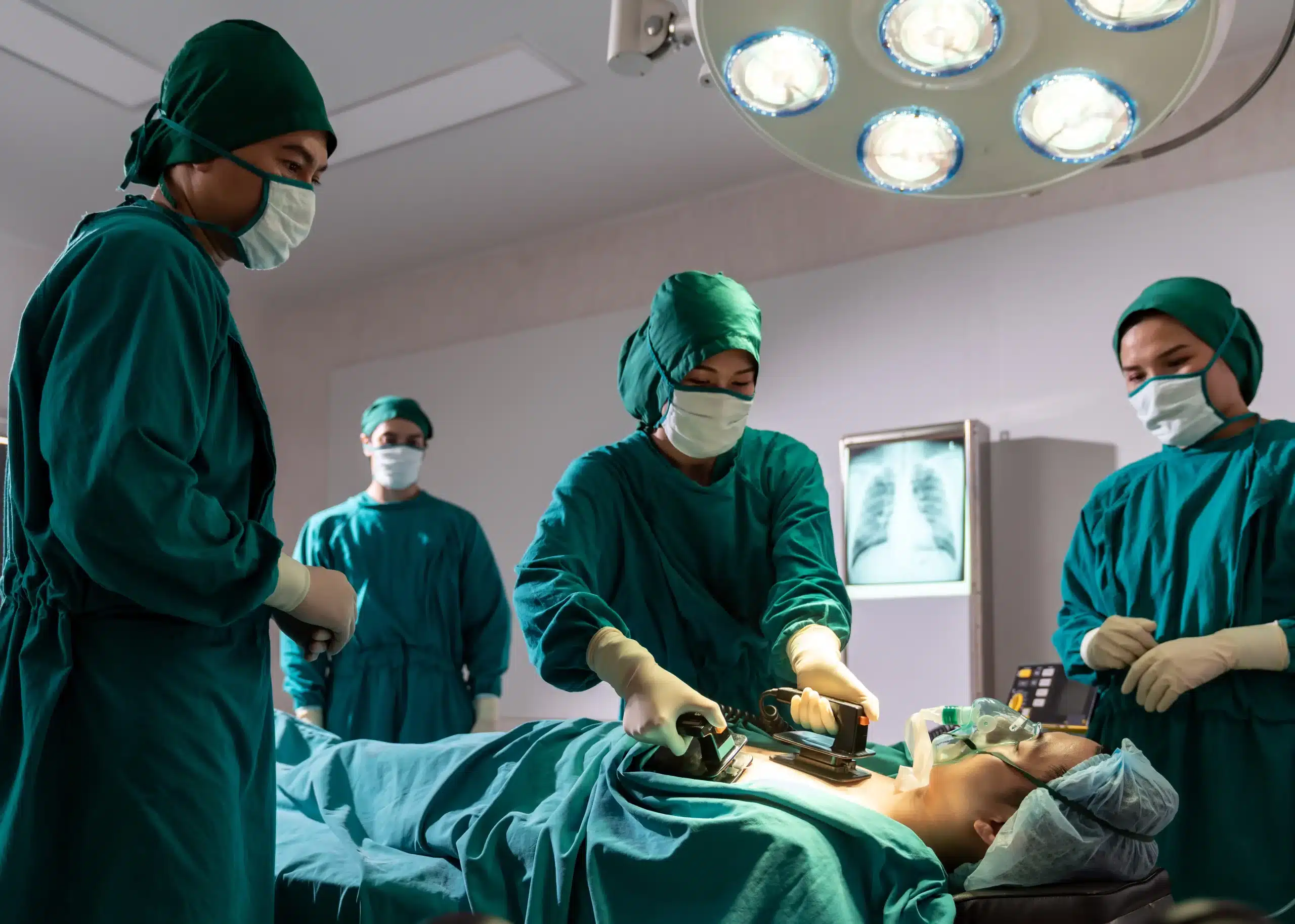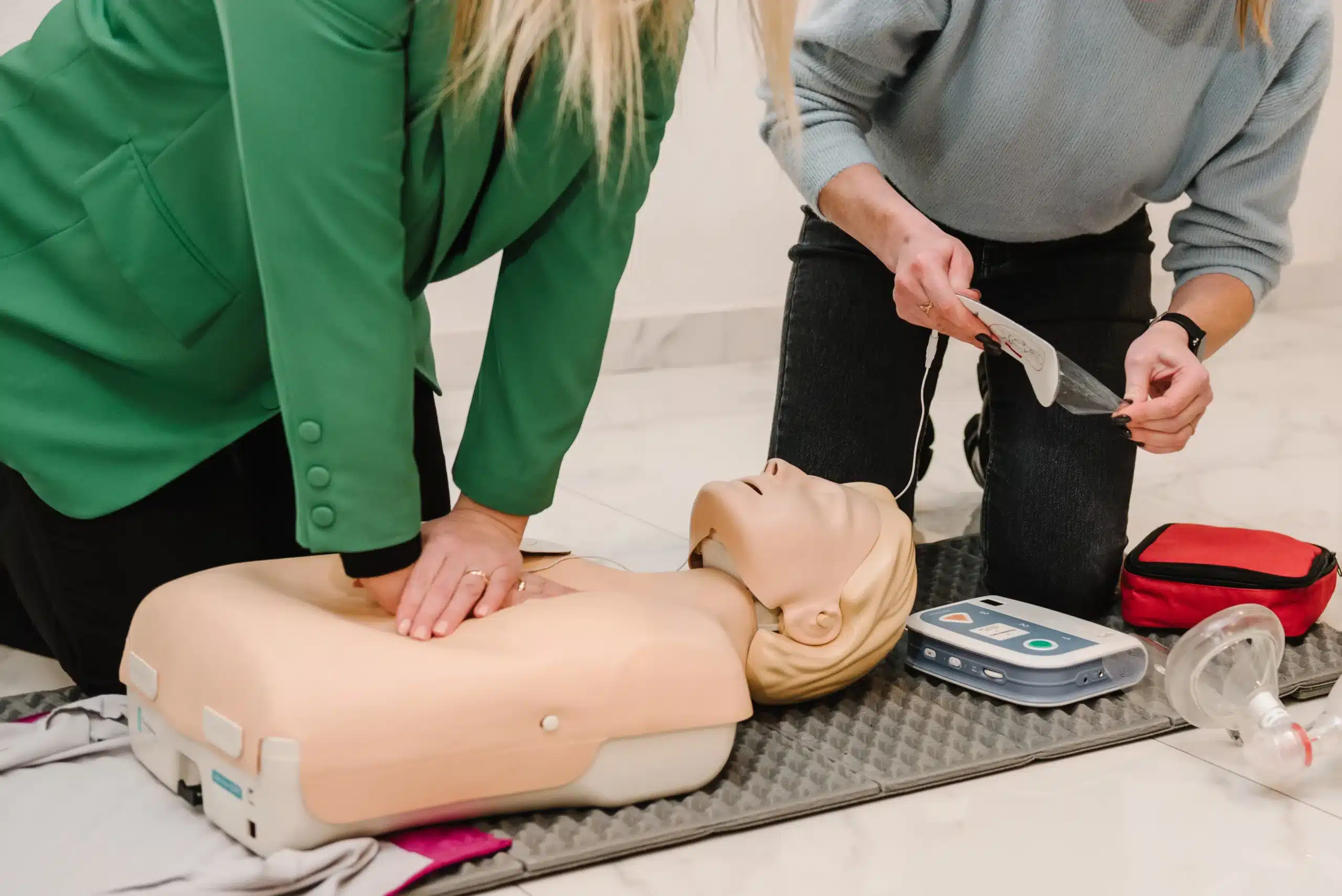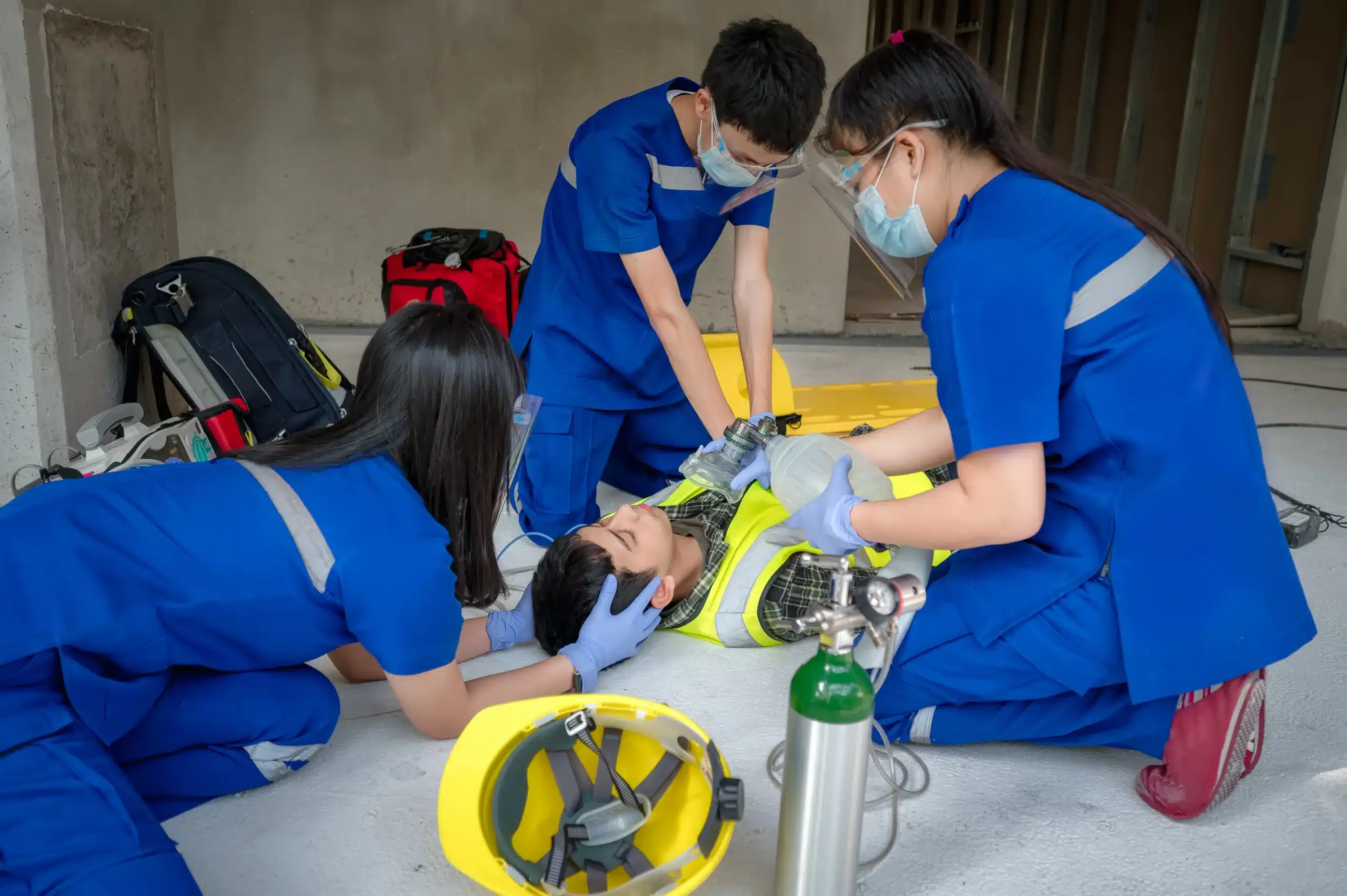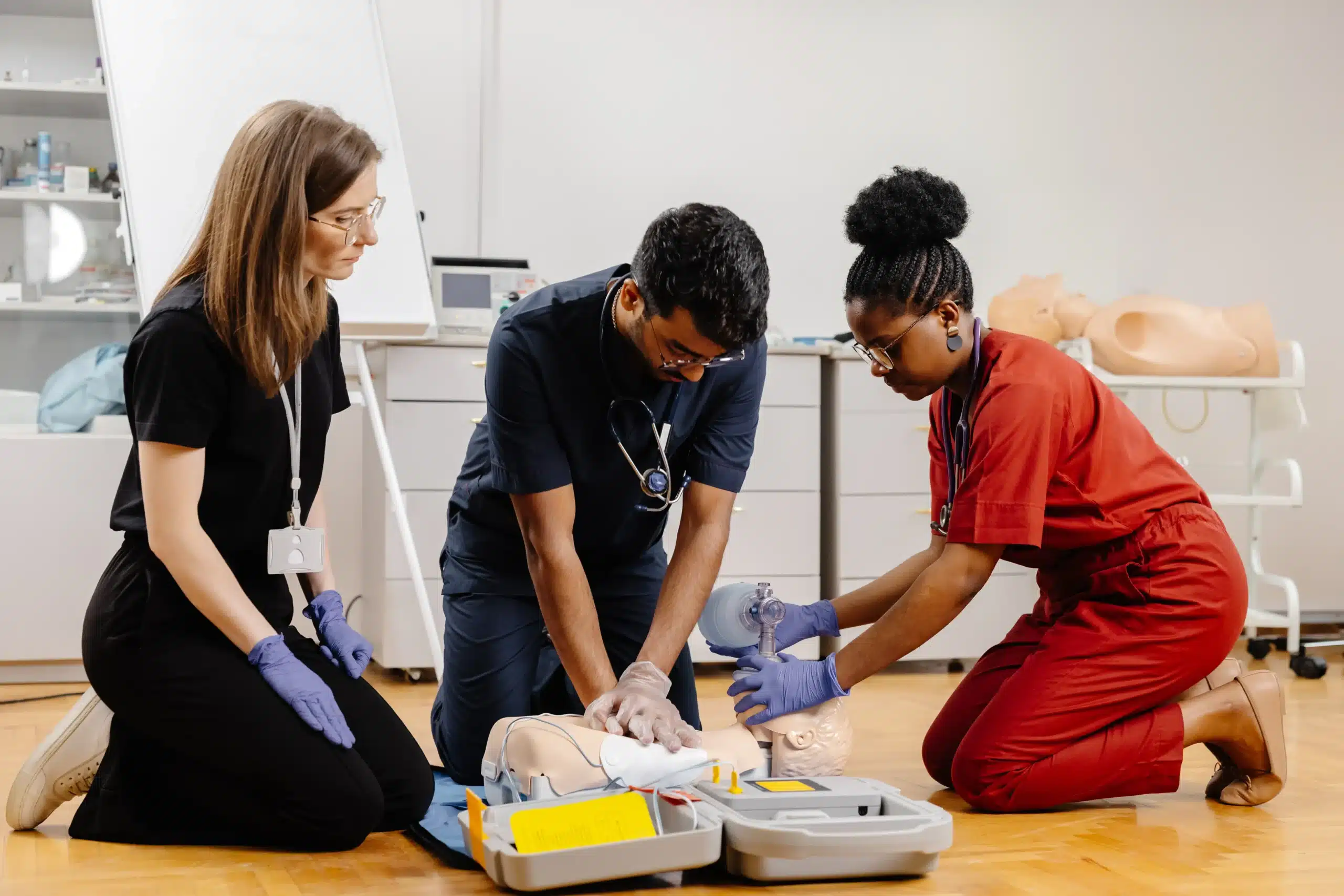Emergencies can strike when we least expect them, making CPR skills not just valuable but potentially life-saving. If you’ve been searching for “CPR courses near me,” this guide is your starting point. We’ll break down the different types of CPR courses, including BLS, ACLS, and PALS, and explain how to find certified training centers in your local area. We’ll also cover what happens during a typical CPR class, the importance of hands-on training, and how to maintain your certification over time. Plus, we’ll explore the various ways you can use your CPR skills, from workplace safety to personal preparedness. Let’s empower you to act confidently and effectively in emergencies.
Key Takeaways
- Find the right CPR course for you: Think about your schedule, budget, and whether you need a general or specialized certification like BLS, ACLS, or PALS. Both in-person and online options are available.
- Local resources offer convenient training: Check with hospitals, community centers, and fire departments, or find AHA and Red Cross training centers near you. Don’t forget to explore online options for added flexibility.
- CPR skills empower you to make a difference: Whether for personal or professional reasons, maintaining your CPR certification keeps you prepared for emergencies and demonstrates your commitment to safety.
What are My CPR Course Options?
Choosing the right CPR course depends on your specific needs and learning style. Let’s break down the different types of courses, what to expect time-wise, and typical costs.
CPR Course Types
Several organizations offer CPR certification. Two of the most recognized are the American Heart Association (AHA) and the American Red Cross. Both provide comprehensive training, but their course content and focus may differ slightly. For example, the AHA offers courses like PALS (Pediatric Advanced Life Support) designed for healthcare providers, while the Red Cross offers more general CPR and first aid training. Consider your profession and whether you need specialized certification when making your choice. We offer a variety of AHA courses, including BLS, ACLS, and PALS, right here in Brentwood. We also offer specialized courses like the EMSA Child Care Health & Safety program and the American Academy of Pediatrics NRP course.
Course Length & Certification
Most CPR courses are designed to fit into a busy schedule. A basic CPR course typically takes about three hours to complete. This includes both classroom instruction and hands-on practice. After successfully completing the course and skills test, you’ll receive a certification card, usually valid for two years. Remember to mark your calendar for recertification when the time comes.
Costs & Discounts
CPR course fees vary depending on the provider and the type of course. Basic CPR courses generally range from $20 to $55. Adding First Aid training usually increases the cost, typically falling between $40 and $60. Specialized courses like PALS or ACLS tend to be more expensive. Many training centers offer discounts, especially for groups. We offer group discounts to make training more accessible for businesses and organizations in Antioch, Brentwood, and Concord. Check our website for our low price guarantee and current course offerings. You can also find a comprehensive list of CPR training providers in Northern California in our directory.
How Do I Find a CPR Course Near Me?
Finding the right CPR course involves understanding your options and doing some research. Think about what kind of learning environment you thrive in, how much time you can commit, and what your budget looks like. Once you have a general idea, you can start narrowing down the choices.
Local Training Centers & Community Organizations
Your local community is a great place to start your search for CPR training. Established organizations like the American Red Cross and the American Heart Association often have training centers in various locations. These classes are usually taught by certified instructors and follow standardized curricula. Plus, learning in person allows for immediate feedback and hands-on practice. Many community centers, hospitals, and fire departments also offer CPR training, sometimes at a lower cost. Check their websites or give them a call to find upcoming class schedules and registration information. For those in and around Antioch, Brentwood, and Concord, Safety Training Seminars offers a range of AHA-certified courses. You can find more local options using our Northern CA CPR directory.
Online CPR Courses & Flexible Scheduling
If a busy schedule or location makes in-person classes difficult, online CPR certification might be a good fit. Reputable online courses, often offered through the same organizations that provide in-person training (like the Red Cross), can provide a solid foundation in CPR principles. These courses typically involve video lessons, interactive exercises, and online exams. However, keep in mind that while the online portion can be completed at your own pace, most online certifications require an in-person skills evaluation to receive your official certification. This blended learning approach combines the convenience of online learning with the essential hands-on practice needed to confidently perform CPR. This online option offers flexibility for those with time constraints.
Checking Course Quality: Reviews & Testimonials
Before committing to any CPR course—whether online or in-person—it’s wise to do your homework. Look for reviews and testimonials from previous students. Websites and online forums can offer valuable insights into the quality of instruction, the course materials, and the overall learning experience. Pay attention to comments about the instructors’ expertise, the clarity of explanations, and the effectiveness of the hands-on training components. You can also check if the organization or training center has any accreditations or affiliations with recognized bodies like the AHA or the Red Cross. This can give you added assurance that the course meets established standards. For instance, consider factors like instructor feedback, as discussed in this article on improving CPR training. Taking the time to research and compare different courses will help you find the best fit for your needs and ensure you receive high-quality training.
What Happens During CPR Training?
CPR training isn’t just about memorizing steps; it’s about building confidence and preparedness for real-life emergencies. Here’s what you can expect during a typical CPR course:
Course Content & Hands-On Practice
CPR courses, like those offered by CPR Certification Dallas, typically cover essential life-saving skills such as Basic Life Support (BLS), CPR for adults, children, and infants, AED use, and basic first aid. The curriculum often follows guidelines set by organizations like the American Heart Association (AHA), emphasizing a combination of knowledge and hands-on practice. This practical training is crucial. You’ll learn chest compression techniques, rescue breathing, and how to recognize the signs of a cardiac arrest. Using CPR training mannequins, you’ll get a realistic feel for performing CPR and develop the muscle memory needed to respond effectively.
Materials & Equipment
High-quality CPR training incorporates up-to-date materials and equipment. Organizations like the American Red Cross rely on medical and scientific experts to ensure their training materials reflect the latest research and best practices. Expect to see training mannequins, AED trainers, and other resources designed to simulate real-world scenarios. Many courses also use feedback devices that monitor your compressions and provide real-time feedback, helping you refine your technique. This ongoing monitoring ensures you’re learning effective CPR skills and building confidence.
Instructor Qualifications & Teaching Methods
Qualified CPR instructors play a vital role in your learning experience. They guide you through the course content, demonstrate proper techniques, and provide personalized feedback. Look for instructors certified by reputable organizations like the AHA, which recommends focusing on recognizing the need for CPR, practicing hands-on skills, and understanding AED use. Effective instructors create a supportive learning environment where you feel comfortable asking questions and practicing. They value student feedback and use it to improve their teaching, ensuring students receive the best possible training and develop the confidence to respond effectively in emergencies.
How Can I Use My CPR Certification?
Getting your CPR certification is a powerful step, but how can you actually use it? Whether you’re driven by personal interest or professional requirements, CPR certification opens doors and empowers you to make a real difference. Let’s explore the various ways you can apply this life-saving skill.
Personal & Professional Uses
A CPR certification is a valuable asset in many situations. It’s widely accepted by employers and organizations across diverse fields, from healthcare and education to childcare and fitness. Many professions require CPR certification, including roles like registered nurses, certified nursing assistants, medical assistants, emergency medical technicians, firefighters, lifeguards, and many more. Even if it’s not a strict requirement, having a CPR certification on your resume demonstrates your commitment to safety and preparedness, giving you an edge in the job market. Beyond the professional sphere, CPR knowledge empowers you to protect your loved ones. You’ll be equipped to respond effectively in emergencies, providing immediate assistance to family members, friends, or even strangers in need. Knowing you can step in during a critical moment offers invaluable peace of mind. The American Heart Association highlights how bystander CPR can dramatically improve survival rates in cardiac arrest cases, sometimes doubling or even tripling the chances of survival. This underscores the profound impact your certification can have.
Workplace Safety
CPR certification plays a crucial role in workplace safety, particularly in environments where accidents or medical emergencies are more likely. Businesses often require employees to hold current CPR certifications to comply with OSHA regulations and ensure a safe working environment. This is especially common in healthcare facilities, educational institutions, and workplaces involving physical activity or hazardous materials. By having trained personnel on-site, businesses can respond swiftly and effectively to emergencies, minimizing the severity of injuries and potentially saving lives. Investing in CPR training for employees demonstrates a commitment to employee well-being and creates a culture of safety. This proactive approach not only protects individuals but also reduces the risk of legal liabilities for businesses. CPR and first-aid training can sometimes be costly, but some workplaces cover these expenses or offer assistance programs to make training more accessible to all employees.
Maintaining Skills & Recertification
Your CPR certification isn’t a one-time achievement; it requires ongoing maintenance to ensure your skills remain sharp. Generally, CPR certifications are valid for two years. As your certification expiration date approaches, you’ll need to complete a recertification course. These courses are typically shorter than the initial certification and focus on refreshing your knowledge and techniques. Staying up-to-date with the latest CPR guidelines and best practices is essential for providing effective assistance in real-life emergencies. Regular practice and recertification ensure you’re always prepared to respond confidently and competently. Check with organizations like the American Red Cross or your local training centers for recertification options and schedules. They often offer flexible options to fit your schedule, including online renewal courses for those whose certification is close to expiring. This allows you to maintain your life-saving skills without significant disruption to your work or personal life.
Where Can I Find Local CPR Training?
Finding the right CPR training boils down to your needs and preferences. Here are some common places to find CPR certification courses:
American Heart Association (AHA)
The American Heart Association offers various CPR courses, from basic community CPR to advanced certifications for healthcare providers. AHA courses emphasize high-quality instruction and follow the latest guidelines. Find AHA-certified training centers through their website. Their recommended courses include recognizing the need for CPR, hands-on practice, and AED instruction.
American Red Cross
The American Red Cross offers various CPR courses for individuals, families, and workplaces. With a wide network of training locations, finding a class nearby is easy. Their website details course schedules, costs, and registration.
Safety Training Seminars
Safety Training Seminars offers comprehensive CPR training and certifications, including BLS, ACLS, and PALS. They prioritize high-quality instruction and convenient scheduling. Visit their website for course availability and locations. They understand that effective CPR training builds confidence and competence in cardiac arrest emergencies. They also offer discounts for group classes. You can find additional CPR resources in their Northern CA CPR directory. For those interested in pediatric care, they offer courses on PALS (Pediatric Advanced Life Support) and NRP (Neonatal Resuscitation Program). They also provide training on EMSA Child Care Health & Safety.
Local Fire Departments
Many local fire departments offer CPR training to their communities, often free or at low cost. Contact your local fire department for information on upcoming sessions. These classes highlight the importance of community emergency preparedness.
Community Colleges
Community colleges often include CPR training in their health and safety programs, accessible to both students and the public. Check with your local community college for details on CPR training and registration. They make CPR training convenient for local residents.
Related Articles
- Online CPR Classes in Brentwood: Your Complete Guide – Brentwood CPR Classes
- CPR Training in Concord: Find the Right Course for You – Brentwood CPR Classes
- CPR and First Aid in Concord: Your Comprehensive Guide – Brentwood CPR Classes
- Why CPR is Crucial in Healthcare
- How to Find BLS Training Near Me – Brentwood CPR Classes
Frequently Asked Questions
What’s the difference between CPR and First Aid certification?
CPR focuses specifically on life-saving techniques for cardiac arrest and breathing emergencies. First Aid covers a broader range of injuries and illnesses, including cuts, burns, fractures, and allergic reactions. While some courses combine CPR and First Aid, they are distinct certifications. You can choose to get certified in either one or both, depending on your needs.
How long does a CPR certification last, and how do I renew it?
CPR certifications are typically valid for two years. To renew, you’ll need to take a recertification course before your current certification expires. Recertification courses are usually shorter than the initial training and cover essential updates and refreshers on CPR techniques. Check with your certifying organization or a local training center for recertification options. Many providers offer convenient online renewal courses.
What if I’m nervous about performing CPR in a real emergency?
It’s completely normal to feel apprehensive about using CPR in a real-life situation. That’s why high-quality training emphasizes hands-on practice and feedback. The more you practice, the more confident you’ll become. Remember, any attempt at CPR is better than none. Your training will kick in when needed, and even basic CPR can significantly improve someone’s chances of survival.
Are online CPR courses as good as in-person classes?
Online CPR courses offer flexibility and convenience, making them a good option for busy schedules. However, most online certifications require an in-person skills evaluation to receive your official certification card. This blended approach combines online learning with essential hands-on practice. While fully online courses might offer a basic understanding, the in-person component is crucial for developing proper technique and confidence.
How much does CPR training cost, and are there any discounts available?
The cost of CPR training varies depending on the provider, course type, and location. Basic CPR courses typically range from $20 to $55. Adding First Aid training usually increases the cost. Specialized courses like PALS or ACLS for healthcare providers are generally more expensive. Many training centers offer discounts, especially for groups or corporate training. Check with your local providers for pricing and available discounts. Some employers also cover the cost of CPR training for their employees.


